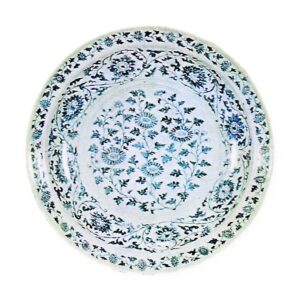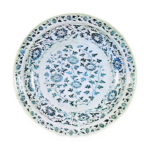
InformationAn official kiln built during the Hongwu period (1368-198) of the Ming dynasty in China. It was established at the foot of Zhushan Mountain in Jingdezhen at the end of the Hongwu dynasty (according to one theory, two years), and kiln ware was fired and offered to the upper class, which was called official porcelain and distinguished from private kilns. In addition to the Dalongjing kiln, there were twenty other kilns, including blue, colored, wind-fired, sagging, and horizontal kilns.
The clay used for these vessels was fine and fat, with a thin blue or black body, and they were considered to be of the purest quality. After making the bowls, they were allowed to dry for a year or more before they were shaved on the potter’s wheel and fired with glaze. If the glaze leaks, it is scraped off and fired again. The glaze therefore shines brightly, and this is a point where private kilns are not able to reach.
The best examples of wares painted on the kiln are Hongwu, which are blue-black and cut gold. Although the above is described in the literature, it is still difficult to know with certainty the production of Hongwu’s wares. This is because there are no reliable examples with annotations (it is thought that there was probably no system of adding annotations). However, since we sometimes find vessels with slightly rougher decoration than the original blue-and-white wares and with more mixed patterns than those of Yongle (1403-24), we have no choice but to identify them as being from the Hongwu kiln. These blue-and-white porcelains are generally black in color. This is probably due to the lack of high-quality blue material during this period. The underglaze red color, on the other hand, is worth looking at. (Pottery Theory, Jingdezhen Pottery Record)








